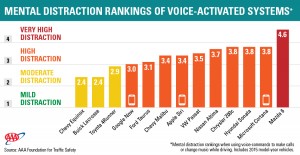Category Archive: Distracted Driving
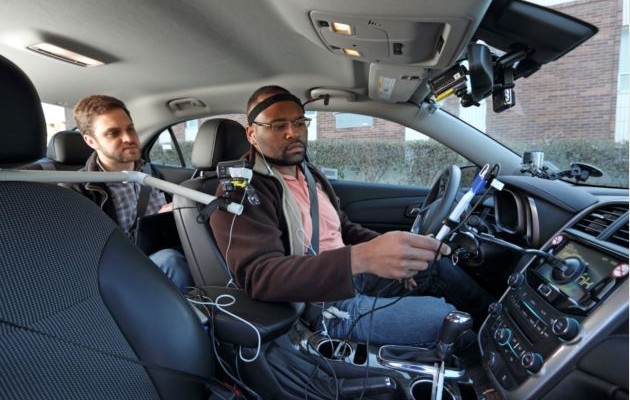
Hands Free Distracts Drivers Long After Hanging Up
November 6, 2015
We’ve written before on the fact that hands free communication devices are no safer or any less distracting for drivers than hand held devices; now there’s evidence that shows they’re still distracting, even after hanging up.
A new study conducted by the University of Utah for the AAA Foundation for Traffic Safety (AAA) shows that it can take up to 27 seconds before the brain can refocus on the task of driving after hanging up on a hands free call or text message. To put that into context, over a period of 27 seconds, a vehicle traveling at just 25 mph will cover approximately 992 feet or the length of three football fields before the driver is able to fully concentrate on the mental task of driving.
The University of Utah conducted two different studies for AAA. The first studied the distraction level of using hands free voice commands to dial phone numbers, call contacts, select music, and send voice texts with Microsoft Cortana, Apple Siri and Google Now. The study showed that, while Google Now was a bit less distracting, all three systems were highly distracting to the drivers.
The second study looked at voice dialing, contact calling, and music selection using in-vehicle “infotainment” systems installed in ten different 2015 model year cars. The study found that three of the systems were moderately distracting, six were rated as highly distracting, and the system installed in the Mazda 6 was found to be very highly distracting.
The tests were conducted using volunteers ranging in age from 21 to 70. The volunteers were accompanied by a researcher as they drove at 25 mph on a 2.7 mile route in a Salt Lake City neighborhood. Each volunteer wore a head mounted device that flashed a red LED light every three to five seconds just to the left of the driver’s vision. Each time they saw the light, drivers would note it using a thumb mounted button. Cameras and other sensors mounted in the vehicle recorded how much time the driver’s eyes were on the road, mirrors, or dashboard. Drivers also participated in a survey to record their perceived attention span during and after the hands free activities. Before conducting the tests, the drivers were allowed to take the car home for a five day period to learn and try to become proficient with the systems.
Most people felt that their full attention was restored after hanging up but the data showed that wasn’t the case. The researchers feel that high tech manufacturers are rolling out the systems too early. There hasn’t been enough time devoted to perfecting the systems and verifying their safety.
Read more: Up to 27 seconds of inattention after talking to your car or smartphone
Photo and graph credits: AAA Foundation for Highway Safety

Careless Driving – Not Design – Responsible For Bridge Crashes
August 3, 2015
After several horrible crashes on Jacksonville Florida’s Buckman bridge, the Florida DOT conducted a study that found that careless driving and speed were responsible for crashes on the bridge, not the bridge design.
The call for the study came after two crashes in the past year made people question the safety of the large span across the St. John’s River. In the first crash, a small truck was sent over the guardrail and into the river. A Navy and police diver search located the driver’s body several hours later. In another crash in March of this year, a disabled SUV was struck by a semi and burst into flames, killing a mother and her three children.
The pickup crash into the river was not the first time a vehicle had gone over the railing into the river and the latest crash caused local residents and officials to question whether the railings on the bridge were high enough. The Florida Department of Transportation (FDOT) was tasked with conducting the study.
In the study, released by FDOT last week, the researchers looked at the previous five year history of crashes, both on the bridge and stretches of I-295 approaching each end. The researchers concluded that the structure of the eight-lane, three mile long double span met all safety requirements and didn’t contribute to the crashes, either on or adjacent to the bridge.
Instead, the researchers blamed careless driving and high speeds for the crashes. In their study, the researchers monitored average speeds throughout the day. In spite of the posted 65 mph speed limit, the researchers said that drivers drive at an average of 72 mph on the bridge.
Careless driving and distracted drivers also play a big part in the crashes on the bridge. In the crash that sent the pickup truck into the river, police reported that a distracted driver swerved to avoid hitting the car ahead and clipped the pickup truck sending it spinning over the bridge railing.
In the crash involving the family, as a driver behind the stalled SUV slowed to a stop, it was hit from behind by the driver of a large truck. As the first vehicle spun out of the lane, the truck plowed ahead and hit the SUV sending it into the guardrail where it burst into flames.
We have written before that there is no such thing as a motor vehicle “accident.” Accidents are something we have no control over. Motor vehicle crashes are caused by drivers who make a fatal error, such as; speeding, driving under the influence, or not paying attention to the road ahead.
Speed causes problems because a speeding driver has very little time to react when encountering a problem in the road ahead. Speeding also increases the impact forces in a crash.
A bridge like the Buckman carries a tremendous amount of traffic and, along with speeding drivers, there are slow drivers (probably on a cell phone) and drivers weaving in and out of lanes. The bridge has a high hump in the middle to allow for boat traffic and, if there’s an obstruction or problem ahead, a speeding, distracted driver won’t realize it until it’s too late. If ever there was a time to ignore the distractions and concentrate on the road ahead, it’s on a bridge like this one.
Speeding and distracted drivers, along with all the other drivers are trapped within the confines of the bridge and, should a problem occur ahead, there’s no room to escape. Drivers need to maintain a safe following distance of at least two seconds and watch, not only at what’s directly in front, but also as far down the road as possible. When driving over the hump, drivers should anticipate the possibility of problems ahead and give themselves extra room to maneuver or stop.
The only recommendations made by the researchers were for greater enforcement of the speed limit and for electric signs ahead of the bridge to warn of crashes or stalled vehicles on the bridge.
Read more: FDOT releases findings on Buckman Bridge crashes
Photo credit: First Coast News
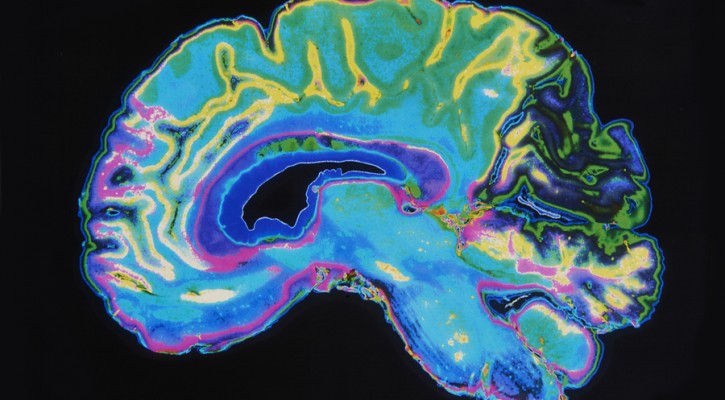
Why Hands Free Phones Aren’t Safer For Drivers
July 28, 2015
Hands free phones aren’t any safer for drivers than hand held phones according to research from Carnegie Mellon University.
Cars are becoming more and more connected to the web with dashboard screens that essentially act as a built in smartphone with many of the features seen in a typical computer. Auto manufacturers say they’re providing what the customer wants but, while cars are being made safer in other areas, the addition of these web connected devices are creating the potential for even more distracted drivers on the road. The manufacturers are also pushing the idea that hands free phones and texting are safer than using handheld devices but the scientific evidence doesn’t back that up.
In 2008, the Carnegie Mellon Center for Cognitive Brain Imaging published a study that used brain imaging to see what actually goes on in the brain while a driver is engaged in a phone conversation.
To conduct the study, 29 volunteer subjects “drove” over a simulated driving course while inside an MRI brain scanner. The subjects had to maintain speed while steering along a winding course. For the first test, the test subjects drove the course without any interruptions. In the second test, the subjects had to drive the course while listening to and answering true or false questions.
While driving without interruptions, the area of the brain that showed the greatest activity was the area responsible for “spatial awareness”; the area of the brain most associated with the complex task of safely steering a car
When the subjects had to listen and answer questions while driving, the activity in the brain’s spatial awareness area was reduced by 37 percent and the area of the brain associated with language comprehension showed the greatest activity.
In spite of all the modern day hubbub about the ability to multitask, the results of the study convinced the researchers that the brain itself isn’t capable of multitasking. The brain has to ignore other demands in order to do one task effectively.
If someone is using a phone while driving, whether it be a handheld or hands free phone, the brain is concentrating on the content of the call, not on the task of driving. When activity in the area of the brain responsible for steering a car and watching the road is reduced, it can be easy to miss a potentially hazardous situation ahead and that can lead to tragedy.
Other, more recent studies have shown that voice activated phone and texting systems such as Apple’s Siri or Google’s voice activated search can be even more distracting than using a hand held phone because of the frustrations experienced when the system fails to understand your requests. Studies also show that the distractions of smartphone notifications, even when they aren’t answered, can lead to driving mistakes.
The best advice for drivers who want to complete their trip safely is to turn off the phone while driving and, if a call must be made, pull off of the road.
Read more: Carnegie Mellon Study Shows Just Listening To Cell Phones Significantly Impairs Drivers
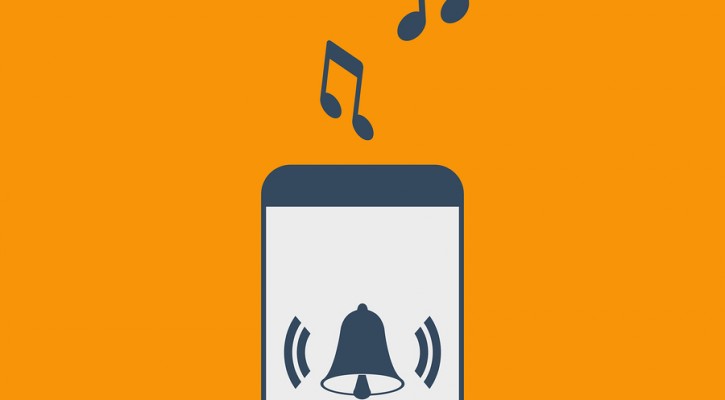
Cell Phone Notifications Are A Distraction Too
July 23, 2015
We all know that talking on a cell phone or reading and sending text messages while driving is a major distraction for drivers but it turns out that just receiving notifications are distracting too, even if the phone calls or texts aren’t answered or read.
This finding was described in a study conducted by researchers at Florida State University (FSU) and published in the Journal of Experimental Psychology: Human Perception and Performance.
To conduct their study, the FSU researchers had volunteers participate in a computerized exercise to determine their ability to concentrate and complete assigned tasks. Once that test had been completed and the results recorded, the volunteers were given the test again. In the second test, the volunteers were randomly assigned to three groups; no notifications, call, or text.
During the second exercise, the researchers called or sent text messages to the assigned volunteers. The volunteers weren’t aware that the calls and texts were part of the study or that the notifications were generated by the researchers.
The results showed that, even though they didn’t respond to the calls or texts, those volunteers who heard or felt the vibrations from the call or text notifications made more mistakes on their computerized tasks than those who didn’t receive any notifications. The results showed that, among those who received a notification, their chances of making a mistake were three times greater than those who didn’t receive any notifications.
According to the researchers, the study shows that the notifications were enough to distract an individual from concentrating on the task at hand. Comparing their data to other studies on the subject, the researchers concluded that just receiving notifications can be as distracting as actually answering the phone or a text.
While not tied specifically to driving, the study shows that drivers, especially those who may find themselves in situations where their concentration is needed most (construction zones, narrow roads with heavy traffic, etc.), could possibly be distracted enough by phone notifications to make a critical mistake on the road.
For drivers, the best bet is to turn the cell phone off while driving.
Read more: Cell phone alerts may be driving you to distraction
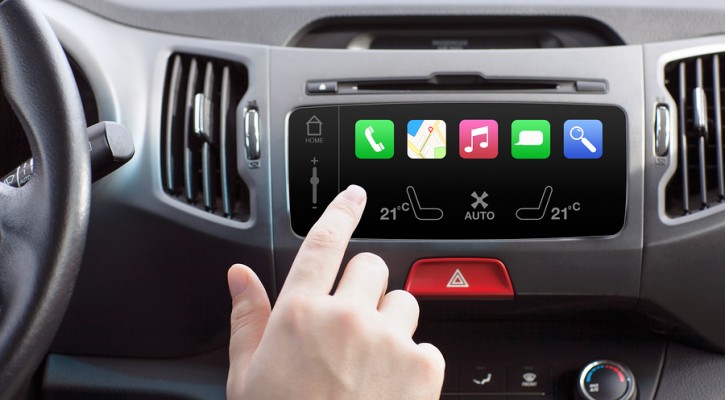
Computer Display Screens In Cars Add To Distractions
July 8, 2015
Computer display screens that automakers are adding to their new models are going to add to the distractions on the road according to experts. The screens, which are tablet size, are supposed to fulfill all the functions of a smartphone.
Both Google and Apple are making built-in computer display systems for cars and automakers seem to be rushing to get them installed and out to potential buyers. According to the automakers, it’s what the customer wants.
Google is producing an Android based system called Android Auto and Apple is producing an iOS operated system they’re calling Apple CarPlay. Both systems are designed to sync with and provide all of the features available in a smartphone including, email, twitter, streaming music and maps. Other apps are also available and more are sure to be added as time goes on.
The computer makers claim that the built-in display screens, some of which feature no-touch and voice activated controls are safer for drivers to use than trying to get all the same information while holding a phone. That may be true in some cases but only to a small degree.
Using these display screens will still require a driver to look away from the road ahead and look at the screen, even if only for a couple of seconds. At 45 mph, a car will travel 132 feet in two seconds and a lot can happen in that distance and time.
According to researchers, voice-activated systems aren’t that safe. Studies have shown that a voice activated system like Siri can cause even more distraction than a hand-held phone. Part of the distraction comes from the frustration of dealing with a voice-activated system that doesn’t understand what you want or displays the wrong information.
When it comes to voice activated texting, researchers in Texas found that, if a driver chose to visually verify the contents of a text, the voice activated systems offered no safety advantage over manual texting.
The problem comes in the skills and brain functions needed to drive. Those are:
- Visual – Keeping your eyes on the road ahead and watching for signals or potential hazards.
- Manual – The manual act of steering and operating the pedals.
- Cognitive – Using your mind to interpret what you are seeing and to make minor or major changes in steering, speed, or both depending on what’s happening on the roadway.
All three of these skills and functions must act together in order to drive safely. If one or more are involved in another activity, driving becomes much more dangerous:
- Whether using hand-held phones or built-in display screens, to make choices, your vision is focused on the display screen and not the road ahead.
- While formulating a response to a text message or carrying on a phone conversation, your cognitive abilities are tied up in the act of texting or listening to the other person and your ability to make rapid decisions regarding the traffic situation is diminished.
- When waving your hand over a display screen to look for or make a music selection, you’re using all three of the functions and skills that should be focused on the very important job of driving.
Many drivers will find, much to their regret, that these display screens don’t add any appreciable degree of safety and they may make the road much more dangerous.
Read more: Car dashboards that act like smart phones raise safety issues

